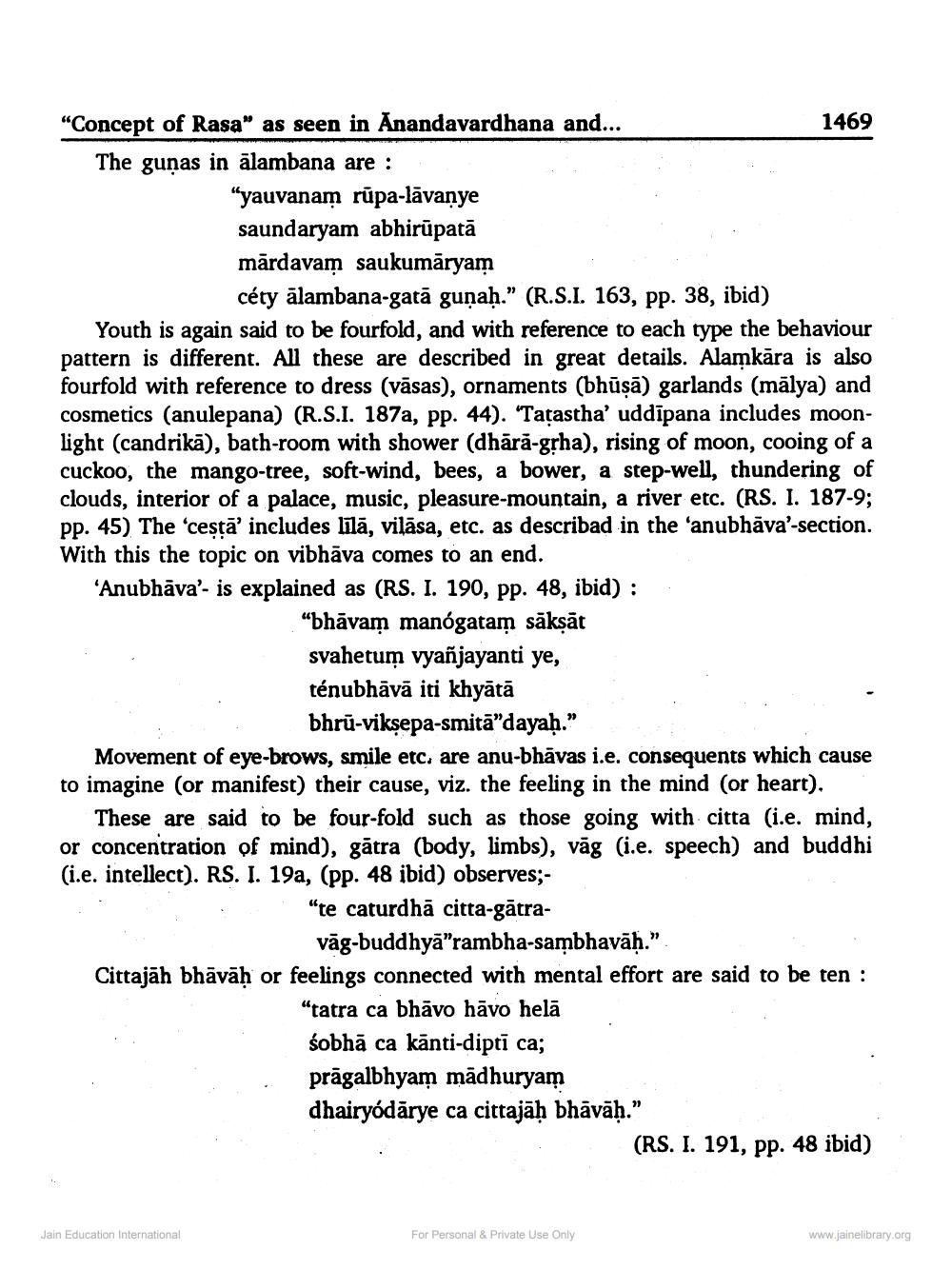________________
"Concept of Rasa" as seen in Anandavardhana and...
1469 The guņas in ālambana are :
"yauvanam rūpa-lāvanye saundaryam abhirūpatā mārdavam saukumāryam
céty ālambana-gatā gunah.” (R.S.I. 163, pp. 38, ibid) Youth is again said to be fourfold, and with reference to each type the behaviour pattern is different. All these are described in great details. Alamkāra is also fourfold with reference to dress (vāsas), ornaments (bhūşā) garlands (mālya) and cosmetics (anulepana) (R.S.I. 187a, pp. 44). "Tațastha' uddīpana includes moonlight (candrikā), bath-room with shower (dhāră-gpha), rising of moon, cooing of a cuckoo, the mango-tree, soft-wind, bees, a bower, a step-well, thundering of clouds, interior of a palace, music, pleasure-mountain, a river etc. (RS. I. 187-9; pp. 45) The 'cestā' includes lilā, vilāsa, etc. as describad in the 'anubhāva'-section With this the topic on vibhāva comes to an end. 'Anubhāva'- is explained as (RS. I. 190, pp. 48, ibid):
"bhāvam manógatam sākṣāt svahetum vyañjayanti ye, ténubhāvā iti khyātā
bhrū-viksepa-smitā"dayaḥ.” Movement of eye-brows, smile etc. are anu-bhāvas i.e. consequents which cause to imagine (or manifest) their cause, viz. the feeling in the mind (or heart),
These are said to be four-fold such as those going with citta (i.e. mind, or concentration of mind), gātra (body, limbs), vāg (i.e. speech) and buddhi (i.e. intellect). RS. I. 19a, (pp. 48 ibid) observes;
"te caturdhā citta-gātra
vāg-buddhyā"rambha-sambhavāḥ.". Cittajāh bhāvāḥ or feelings connected with mental effort are said to be ten :
"tatra ca bhāvo hāvo helā sobhā ca kānti-diptī ca; prāgalbhyam mādhuryam dhairyódārye ca cittajāḥ bhāvāḥ.”
(RS. I. 191, pp. 48 ibid)
Jain Education International
For Personal & Private Use Only
www.jainelibrary.org




